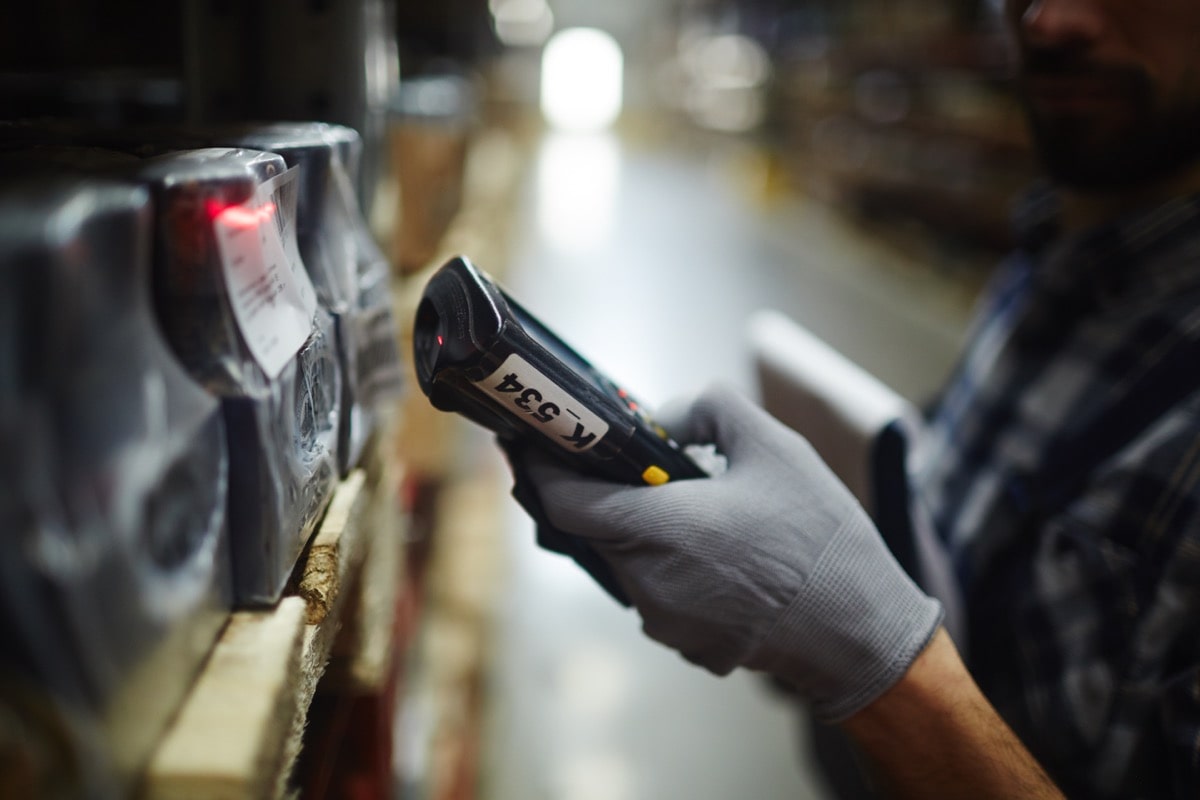Artificial intelligence (AI) has disrupted the retail industry, offering innovative ways to shop, manage inventory and analyse marketing trends. We are continuing our article series on AI in retail with a brilliant illustration of Walmart.

Image: corporate.walmart.com
About Walmart
For many years, Walmart has topped the list of the world’s largest retailers. In 2022 alone, its worldwide retail sales exceeded $600B. To compare, Amazon’s global sales were nearly $343B, which brought the e-commerce giant the well-deserved second spot in the retail rating.
This major retail corporation operates a chain of hypermarkets (also called supercentres), discount department stores, Sam’s Club retail warehouses, and grocery stores in the United States. Besides its main market, Walmart is present in 24 countries, operating internationally under 46 different names.
Walmart and its retail & payment ecosystem have been part of the commerce landscape for over 60 years. Despite the solid legacy, the retail leader also keeps on top of the industry innovations.
In 2015, Walmart customers first got the opportunity to pay for purchases with their phones via the company’s own mobile payment system. Walmart has also launched its money transfer system which functions both off- and online. In 2021, Walmart found a way to solve the “last-mile delivery” problem with its InHome Delivery service that delivers products straight to customers’ fridges.
However, the latest Walmart’s fascination is AI, which Walmart sees as a viable method to make its digital tools smarter and increase the effectiveness of self-service, meeting evolving customer needs.
How Walmart Leverages AI to Prevent Theft
Walmart has implemented an AI-powered surveillance system in its stores to prevent theft. The cameras powered by artificial intelligence monitor the cash registers (both with cashiers and self-service stations). If the system notices a malicious action (for example, an attempt to avoid scanning an item), or other types of mistakes (a bar code mismatch, a scanner error, etc.), personnel is called.
With the help of computer vision and machine learning algorithms, the cameras are able to capture images of the scanned items and compare them with the registered weight to detect any discrepancies. The system can also detect when an item is placed in a bag without being scanned or if a customer tries to scan a lower-priced item instead of a higher-priced one.
The retailer has been using AI Missed Scan Detection since 2017. At the same time, in 2020 first reports about the original system’s inefficiency occurred. According to the anonymous group of Walmart employees, the AI-enabled surveillance developed by Evergreen often misjudged customer behaviour at the checkout. Allegedly, AI cameras misidentified innocent customers’ behaviour for possible thefts, while consistently failing to stop legitimate shoplifting from self-checkouts.
To solve some of the related issues Walmart upgraded its self-checkout with Edgify AI technology in 2023. The new AI technology addresses the cases when one item is scanned instead of another at self-checkout. Besides, it is able to identify non-priced items like fruits and vegetables that rely on the customer to select the item from a menu and can easily be selected improperly.

Sam’s Club and Its AI-Powered Inventory Analytics Robots
Being part of the Walmart retail empire, Sam’s Club retail warehouses have a unique experience when it comes to AI use. In 2022, the brand added an inventory scan function to its already innovative fleet of robotic scrubbers. The latter capture real-time images of every item in the store while cleaning the floors.
The daily number of robot-made pictures exceeds 20 million. With such a vast amount of data on customer preferences, the scrubbers help Sam’s Club tailor the shopping experience to customer needs. The machines work autonomously, uploading the collected data to the cloud storage for analysis.
It provides numerous insights for store managers, including verification of pricing accuracy, planogram compliance, product stock levels and product localisation. The innovation also eliminates time-consuming manual processes, reducing waste and inventory loss, and allowing human personnel to focus on customer service. Besides, the system analyses historical item sales behaviour and tells associates which items to put on the floor first based on the popularity of that item in a particular period.
The AI use is especially helpful to Sam’s Club operations during the peak holiday season. “With accurate AI forecasting, last year we sold enough pies to cover the length of 450 football fields while staying ahead of customer demand and reducing food waste,” said Vinod Bidarkoppa, SVP and chief technology officer at Sam’s Club.
He further explained that to satisfy customer demand in this seasonal product, the company leveraged a machine-learning (ML) based forecast looking at a number of variables, including local weather conditions, holiday dates and shelf life. ML also helped Sam’s Club to plan the most efficient way to ship all of those pumpkin pies to the 600 clubs.
The Club’s management is very enthusiastic about AI usage. Moreover, Sam’s Club plans to build on its AI efforts.
“Whether it’s planning, buying, planning, moving or selling across all of those core retail processes, we will continue to double down on machine learning. There’s a long list of things that are on my to-do list and I’m really excited about what we can do with this technology, for both our members and associates.”
Vinod Bidarkoppa
AI Improves Product Substitution in Online Orders
In 2020, the pandemic caused an unprecedented boom in online ordering. Retailers needed to quickly adjust to the changing customer behaviour. As popular items could sell out sooner than predicted, Walmart decided to use artificial intelligence to help both customers and Personal Shoppers choose the best substitute for an out-of-stock item.
Walmart tech uses deep learning AI to analyse hundreds of variables, e.g. size, type, brand, price, aggregate shopper data, individual customer preference, current inventory and more. It performs the analysis in real-time to determine the best next available item which is currently in stock. The tool asks the customer to approve the substituted item or reject the selected product if they don’t want it. The client’s choice is an important signal for the learning algorithms to improve the accuracy of future recommendations.
Not only does it help to improve customer satisfaction, but also facilitates the work of a Personal Shopper. They automatically receive alternative product suggestions, based on thorough analytics rather than fair guesses. In addition, the AI-powered tech shows Walmart employees where the item is located in the store, helping them to prepare orders quickly and efficiently.
The company claims that since the tech was deployed customer acceptance of offered substitutions has increased to over 95%.

Walmart Uses AI in Employee-Centred Apps
In 2021, Walmart Global Tech India (WGTI) rolled out the Me@Walmart app for local staff. The app enabled employees (associates) to manage their work schedules, stay in touch around the store, and quickly check the availability of an item in inventory to respond to customers’ questions. Moreover, the tool features in-store pickers sophisticated routing and batching algorithms to maximise their efficiency and speed of order compilation.
In 2023, Walmart launched another version of the internal app called My Assistant. The tool is powered by generative AI and targets all its non-store U.S. employees. The feature can accelerate draft writing, act as a creative partner or summarise large documents, all within the Me@Campus, the company’s employee service.
Walmart envisions using the tool for new hires during orientation and to inform employees about corporate benefits during annual enrollment. The company believes AI technology will free associates from monotonous, repetitive tasks, allowing them to focus on improving the customer/member experience.
AI in Walmart’s Shopping App
To improve the shopping experience for its customers, Walmart uses AI technology in its shopping app. AI analyses customer behaviour and preferences, for example, how often they purchase certain items and what sizes they typically order. This way, Walmart can provide more personalised recommendations to each individual customer.
By leveraging AI, Walmart can focus on everyday necessities that customers regularly purchase. The retailer is able to anticipate customer needs and provide them with timely recommendations and the best possible shopping experience.
The company also uses AI technologies and natural language processing (NLP) in search and personalisation. English language queries are analysed to understand what people mean when they request a product type and figure out what parts of the query are important. In addition, NLP helped Walmart to enable and improve Spanish language queries at Walmart Search, improving the shopping experience for its Hispanic customers.

Image: corporate.walmart.com
AI in Walmart Fulfilment Centres and Across the Supply Chain
In May 2023, Walmart opened its second Market Fulfilment Centre (MFC). The new complex in Bentonville, Arkansas, has its own information search and storage systems. It is powered by Alphabot solution, a system that uses autonomous carts to retrieve goods purchased from an online store and deliver them to a workstation where a Walmart employee checks, packs, and delivers an order.
According to Walmart, Alphabot helps to collect and package orders at a 10x faster speed than the pace of similar human work. Its automated fulfilment centres use robotics and machine learning to speed up fulfilment.
Therefore, Walmart announced it would also bring Symbotic’s next-generation robotics and AI technology to all 42 of its regional distribution centres over the next eight years to modernise its supply chain network.
Overall, Walmart’s AI use across the supply chain has evolved over the past few years. The retailer moved from simply predicting sales demand based on sales history to predicting consumer demand by analysing data across various channels, from Google searches to TikTok social feeds.
How Walmart Uses Conversational AI
Conversational AI helps Walmart customers and associates around the world save time and have a better experience in the following ways:
- Walmart Voice Order enables voice shopping via smart speakers and mobile devices. The company’s order-taking system uses NLP to understand the request, product name entity recognition to identify the products, and their prior purchase information to determine brand preferences. Besides, it’s able to identify the conversation’s context, e.g. whether it is the beginning of a new query or the continuation of an existing one, before executing the task.
- Chatbots are a typical use of AI in retail. Walmart’s chatbots assist customers with simple questions about the status of an order, returns and more, enabling agents to focus on assisting customers with more complex queries.
- Ask Sam is a voice assistant for Walmart in-store associates. It enables them to locate items, access store maps, look up prices and view sales information, and check messages and details of the internal routines.
Machine Learning AI powers VR & AR tools for Walmart
The last but not least item on our list of Walmart’s AI use cases is augmented reality (AR) features enabled by computer vision and machine learning. The retail giant leverages AR both for customer benefit and associates’ convenience.
In 2022, Walmart introduced a new virtual try-on technology that lets shoppers use their own photos to see how clothing looks on them. Previously, Walmart online shoppers could only scroll down the images of different fashion models to find the ones with similar looks and visualise selected clothing on them.
Besides, the company developed a customised AR overlay that instantly maps and tracks every box in the backroom for store associates. The solution relies on camera-readable labels affixed to each box, highlighting boxes with items that need to be moved to shelves. This way, the AI-enabled virtual tool saves the time needed to manually scan each box to find the correct one.









